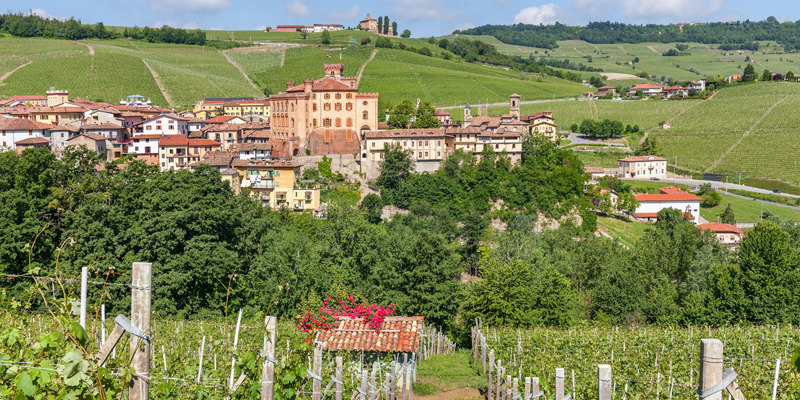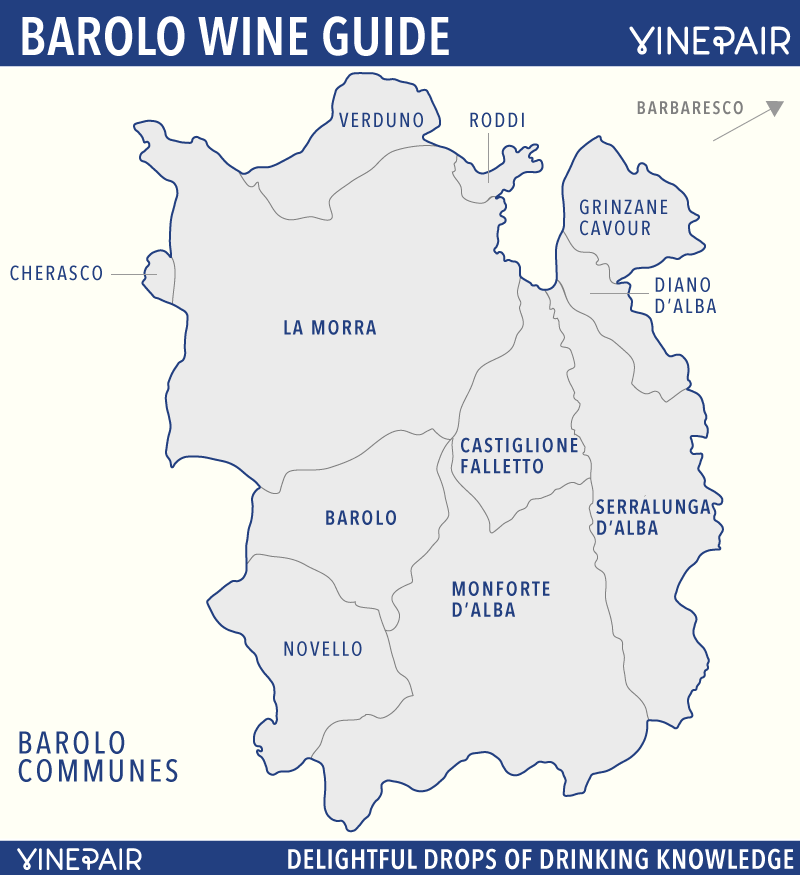For many of the most storied wine regions of the world, understanding them and the wines they produce can be overwhelming. Barolo is one such region. Besides Chianti, it is the most well-known and celebrated region in Italy. And, like Chianti, it’s had a long romantic journey to where it sits today in the world of wine. But the history of Barolo is for another day. For the purposes of this article, I am focusing on the notion that you may want to drop some coin on one these amazing bottles, and may want to know what you’re getting yourself into. So let’s hack away at the region of Barolo, and in the process, give you some well-deserved confidence in ordering or buying a bottle.
The wine region of Barolo is situated in the southern hills of Piedmont – which means “foothills of the mountain” – in northern Italy. It’s tucked in just south of the town and commune of Alba and slightly north of the Langhe hills. In this area winemakers grow a short list of grapes but none is more important than Nebbiolo. Nebbiolo is a rough translation of the Latin word “nebbia”, which means “fog”, named so for two potential reasons: first because the grape itself has a milky hue coating its red skin color, and second, because at harvest in mid to late October, a very dense fog settles into the hills hovering over the vineyards.
The wine, Barolo, is named after the commune in Piedmont that made it famous and is made of 100% of the Nebbiolo grape (full disclosure: Nebbiolo is this wine geek’s favorite wine grape.) The core of Barolo winemaking is concentrated into five townships: Barolo itself, La Morra to the north of the town of Barolo, and going east and south of Barolo are the communes of Castiglione Falleto, Serralunga D’Alba and Monforte D’Alba. These five townships make up 87% of the total Barolo region. There are seven other outlying areas where Barolo can be made, including Novella, just south of the town of Barolo, but the five areas mentioned above are where the real magic happens.
Don't Miss A Drop
Get the latest in beer, wine, and cocktail culture sent straight to your inbox.Though there is now a law that declares these five communes the Barolo DOCG Crus, Barolos can be made from Nebbiolo gathered from multiple vineyards in a commune, or from a single vineyard. Each “Cru” has its own prized vineyards, with names like Cannubi in Barolo and Monprivato in in Castiglione Falleto. Wines made from single vineyards are some of the most expensive yet most jaw-droppingly awesome examples of Barolo that you’ll find.
As a wine Barolo is a wonderful ruby color moving towards garnet. The wines are comfortably heady and concentrated ,with pronounced tannin and acidity and dizzying aromas such as plums, light rose petals and hints of tar and licorice. Some of the most coveted Barolos will also give you a whiff of white truffles, which are hunted in the region.
Before a Barolo can be released, it must be aged for a minimum of three years with at least one of those years in oak or chestnut barrels. For Barolo Riserva the minimum is five years, with one year in wood. But remember these are simply the minimum requirements by law, as these wines can actually be aged for longer at the behest of the winemaker.
Now that you have an idea of how awesome Barolo wines are, here is a little trick to buying and enjoying them. Older Barolo is obviously going to be more expensive than younger Barolo, and yet because these wines age for well over two decades they can be a bit austere in their youth, right? Not necessarily. If you’re just stepping into the land of Barolo go for bottles from the townships of Barolo itself and La Morra. Why? These vines grow in fresher, more fertile soils than the other townships, resulting in fruitier, softer and more aromatic wines that age quicker. You can pop a Barolo from these two areas a year or so after release, and it will be bright and beautiful. These are wines that mostly adhere to the minimum aging requirements. To experience the full power of the Nebbiolo grape the wines from Castiglione Falleto, Serralunga D’Alba and Monforte D’Alba take longer to age because the grapes grow in soil that’s much less fertile. These are examples where a winemaker might hold off for an extra year or two before release.
So that’s Barolo in a nutshell. If you are looking to really invest in these wines here is a list of exceptional vintages that are drinking perfectly right now: 1996,2001,1999,2000,1998 and 1997 in respective awesomeness.
So go out and drop some coin, and if you have any more questions hit me up in the comments section. SALUTÉ!


